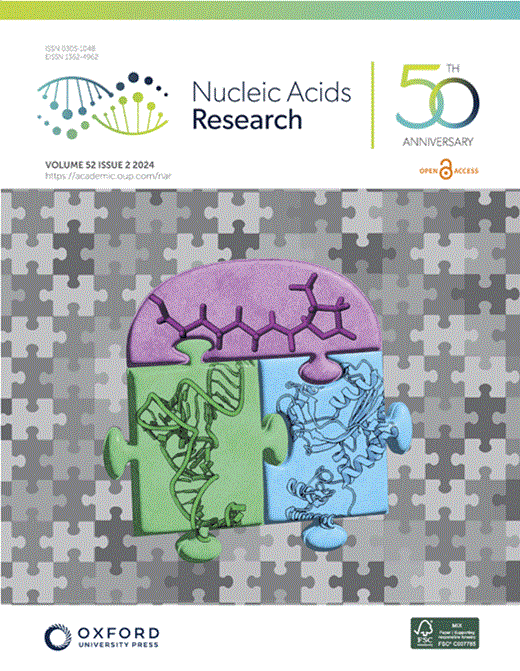Tailoring and reversing m6A editing with sequential RNA bioorthogonal chemistry
IF 13.1
2区 生物学
Q1 BIOCHEMISTRY & MOLECULAR BIOLOGY
引用次数: 0
Abstract
Many existing methods for post-transcriptional RNA modification rely on a single-step approach, limiting the ability to reversibly control m6A methylation at specific sites. Here, we address this challenge by developing a multi-step system that builds on the concept of sequential RNA bioorthogonal chemistry. Our strategy uses an azide-based reagent (NAI-N3) capable of both cleavage and ligation reactions, thereby allowing iterative and reversible modifications of RNA in living cells. By applying this approach in CRISPR (clustered regularly interspaced short palindromic repeats)-based frameworks, we demonstrate tailored editing of m6A marks at targeted RNA sites, overcoming the one-way restriction of conventional bioorthogonal methods. This sequential protocol not only broadens the scope for fine-tuned RNA regulation but also provides a versatile platform for exploring dynamic m6A function in genetic and epigenetic research.序列RNA生物正交化学裁剪和逆转m6A编辑
许多现有的转录后RNA修饰方法依赖于单步方法,限制了在特定位点可逆控制m6A甲基化的能力。在这里,我们通过开发基于顺序RNA生物正交化学概念的多步骤系统来解决这一挑战。我们的策略使用一种基于叠氮化合物的试剂(NAI-N3),能够进行切割和连接反应,从而允许活细胞中RNA的迭代和可逆修饰。通过将这种方法应用于基于CRISPR(聚类规则间隔短回文重复序列)的框架,我们展示了针对靶向RNA位点的m6A标记的定制编辑,克服了传统生物正交方法的单向限制。该序列协议不仅拓宽了微调RNA调控的范围,而且为探索遗传和表观遗传研究中的动态m6A功能提供了一个多功能平台。
本文章由计算机程序翻译,如有差异,请以英文原文为准。
求助全文
约1分钟内获得全文
求助全文
来源期刊

Nucleic Acids Research
生物-生化与分子生物学
CiteScore
27.10
自引率
4.70%
发文量
1057
审稿时长
2 months
期刊介绍:
Nucleic Acids Research (NAR) is a scientific journal that publishes research on various aspects of nucleic acids and proteins involved in nucleic acid metabolism and interactions. It covers areas such as chemistry and synthetic biology, computational biology, gene regulation, chromatin and epigenetics, genome integrity, repair and replication, genomics, molecular biology, nucleic acid enzymes, RNA, and structural biology. The journal also includes a Survey and Summary section for brief reviews. Additionally, each year, the first issue is dedicated to biological databases, and an issue in July focuses on web-based software resources for the biological community. Nucleic Acids Research is indexed by several services including Abstracts on Hygiene and Communicable Diseases, Animal Breeding Abstracts, Agricultural Engineering Abstracts, Agbiotech News and Information, BIOSIS Previews, CAB Abstracts, and EMBASE.
 求助内容:
求助内容: 应助结果提醒方式:
应助结果提醒方式:


